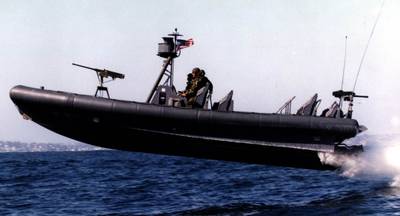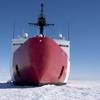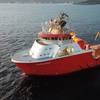U.S. Navy: New Software to Analyze Accelerations on High-speed Boats
Naval Surface Warfare Center (NSWC) Carderock engineers released a new software that provides the government, industry and academia a standardized method of analyzing data that is expected to improve high-speed craft design.
The Standard G software uses a physics-based approach to analyze data recorded during wave-impact testing on watercraft and was developed in partnership with the Office of Naval Research, the U.S. Naval Academy and the Virginia Polytechnic Institute and State University.
"Prior to this research, the complex nature of collecting, processing and analyzing [this] data, as well as the subjectivity that existed at various stages of data processing, resulted in numbers generated by government, industry and academic researchers that were not comparable," said Dr. Timothy Coats, director of research and development, Combatant Craft Division in Virginia Beach, Va. "Achieving consistency in data is critical to improve the overall design of high-speed watercraft related to seaworthiness, hull design loads, ruggedness and crew or passenger comfort and safety."
The Standard G software is available to government, industry and academia for use and is compatible with widely used industry software that analyzes other engineering aspects of small boats. More improvements are anticipated in other technical areas including computer simulation validation, wave-slam mitigation, and model-scale to full-scale comparative evaluations.
"We are very pleased with the positive feedback we are receiving from academia, private industry, other Navy laboratories, and our international partners," said Coats.
The research was initially funded by ONR and was completed using NSWCCD Naval Innovative Science and Engineering (NISE - 219) funds. NISE provides the DoD science and engineering organizations the capability to develop and transition technology as well as develop the workforce and enhance laboratory facilities and equipment.
Research in craft wave slam mitigation is tied to NSWCCD’s Technical Capability (TC) in combatant craft and Marine Corps vehicles. Under this TC, NSWCCD provides boat/craft level integration for all naval architecture and marine engineering aspects of boat, craft and vehicle development including vehicles with all types of hull forms and mission requirements from unpowered, towed craft to high speed vehicles with dynamic as well as buoyant lift. To learn more about the 132 technical capabilities across the NAVSEA Warfare Centers, please visit: http://www.navsea.navy.mil/Organization/WFC_TECHNICAL_CAPABILITIES_%20Rev4%20FINAL_01June2011.pdf
(By Nicholas Malay, NSWC Carderock Public Affairs)













